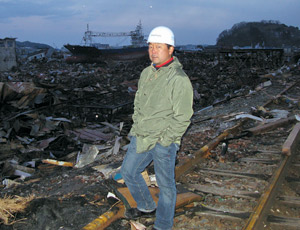With estimates of at least 110,000 buildings damaged or destroyed and 20,000 fatalities in the March 11 earthquake and tsunami, rebuilding Japan will be a long and expensive undertaking, dwarfing the financial impact of the 1995 Kobe quake disaster. The World Bank estimates dam- age at up to $235 billion, 4% of Japan’s gross domestic product (GDP), compared with $100 billion for Kobe, or 2% of GDP. Private insurers could pay up to $33 billion to cover the destruction, compared with $783 million for Kobe, according to the bank.

Restoration will have to be more than just replacement, observ-ers say. “The Japanese government has spent billions of dollars over the last several decades to build an elaborate seawall system along the coastline. But the walls turned out to be simply too small for a 3- to 10-meter tsunami,” says H. Kit Miyamoto, a structural engineer and CEO of West Sacramento, Calif.-based Miyamoto International, who was presenting at an earthquake conference in Tokyo when the 9.0 temblor struck. He says in downtown Kesennuma City in Miyagi Prefecture “about 80% of the buildings were totally destroyed or taken out to sea by the retreating waves.” It had an estimated population of more than 73,000.
The task may be delayed by a lack of manufacturing capacity for heavy machinery and components. Equipment makers Caterpillar Inc., Komatsu Ltd. and Hitachi Ltd. report damage at facilities and at key coastal ports. “Beyond the nuclear plants, many fossil fuel–burning powerplants are also damaged along the eastern coast,” says Miyamoto. “The total economic impact on society is still unknown, but it will be huge and it will be felt worldwide.”





Post a comment to this article
Report Abusive Comment